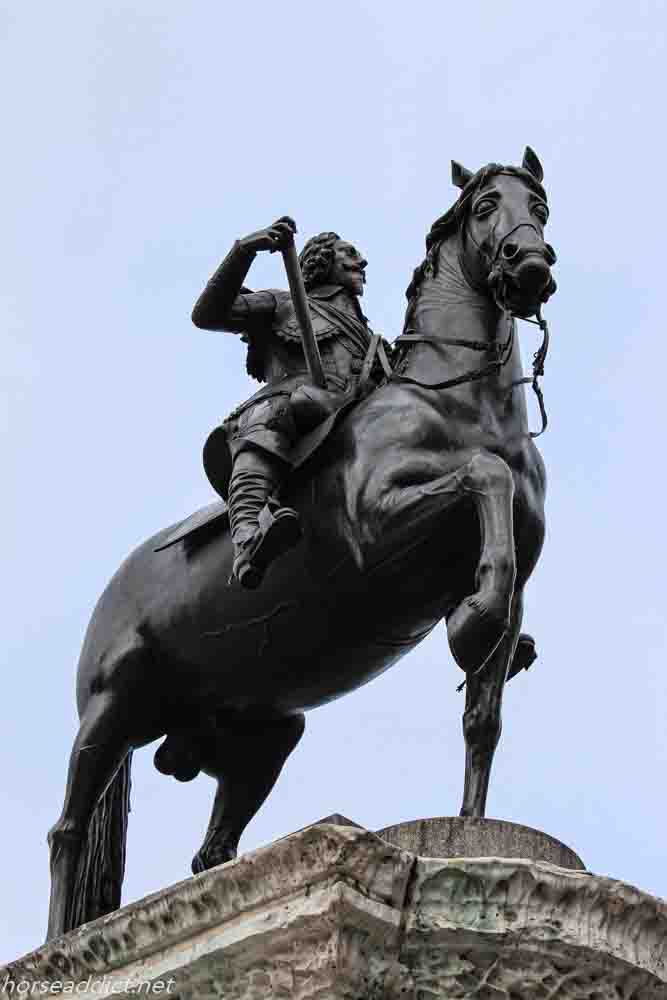
South of Trafalgar Square, at Charing Cross, there is a statue of Charles 1 mounted on a stallion As you may know Charles I had some trouble keeping his head on his shoulders and despite his belief in being King of England, by “Divine Right”, he got on the wrong side of a lot of people, including Oliver Cromwell. This led to his being executed on January 30, 1649. There are many stories about what happened to his body and to his head, with one being that his head was collected and sewn back onto his body before he was buried. He was buried in a vault at Windsor Castle with Henry VIII and Jane Seymour. Cromwell was using Windsor as a prison for Royalists at the time and no doubt thought that was an appropriate place to dispose of the monarch’s body.
But what happened to the statue of him mounted on the impressive stallion? It was sold to a metalsmith, John Rivet, who was instructed by the Parliament to have it melted down. But John Rivet did not follow these orders! He kept the statue intact and hidden. He produced a few pieces of broken brass as proof he had carried out the orders. He also sold quite a few brass handled pieces of cutlery, claiming they were made from melted down statue, as further proof! He revealed the statue again at the Restoration of the Stuart Monarchy with Charles II in 1660.

The statue was placed in its’ current location , on an elaborate plinth, in 1675. In a curious but amusing twist it faces down Whitehall, towards Charles I place of Execution, at the Banqueting house!
And another thing…..its’ location at Charing Cross is also significant as Charing Cross is considered the center of London and all distances are measured from this point.

Just behind Charles I is Traflagar Square and the column of Nelson. From some perspectives it looks like Nelson is looking down right at Charles 1. As a side note……if Britain had lost WWII the Germans had plans to take the column of Nelson and place it in front of the Reichstag as a symbol of superiority and victory! So an executed monarch and a victorious Admiral stand today, heads on their shoulders and looking proud. Cue music! Elgar’s Land of Hope and Glory would do nicely I think. And what better than the last night of the Proms.

Leave a Reply